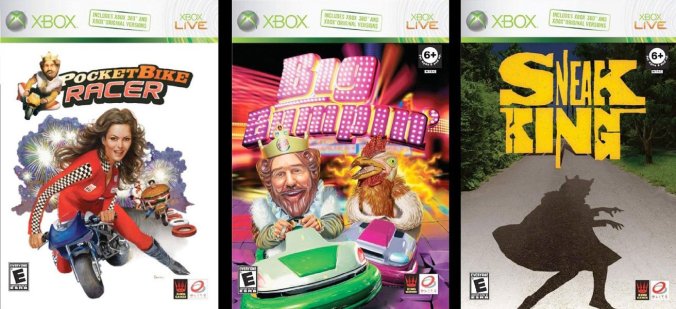
I don’t like Burger King as a restaurant. It’s not horrible – I’ve only ever been to one restaurant personally that I refuse to go back to – but the food is overpriced for what you get (I could either go to McDonalds for something cheaper or Wendy’s for something better). And while this might just be me, this chain is always the most inconvenient of locations. However, The King is actually my favorite of the various restaurant mascots. A big part of that is that the unsettling nature of his design always came off as intentional rather than poor design (The Happy Meal Boxes) or just not aging well in the age of the internet (Ronald McDonald). It’s also worth mentioning that the King existed well before Denny’s and Wendy’s turned online marketing into a sanitized 4Chan post, so those ads feel a bit ahead of their time without just being what you see today.
But while our Flame Broiled Highness has been all but retired, his legacy lives on through heart disease and a few video games, which is the topic of today’s Awful Archives. Back in 2006, Burger King opened up a publishing company (King Games, no relation to Candy Crush) hired Blitz Games to make three games featuring the royal creeper and his cast of OCs: Big Bumpin’, Pocket Bike Racer, and Sneak King. They were originally designed for the Xbox Live Arcade, but were considered to be of a high enough quality to earn a physical release.
The definition of situational irony is when reality manages to completely subvert expectation.
These games were critic fodder on sight. Most outlets gave each game a 30% or lower, The Completionist gave it his rare rating of “destroy it” (the lowest on his scale), and any user reviews are either saying it’s terrible or just memeing. The highest praise I’ve seen awarded to them unironically is that they aren’t as bad as the M&M games, which is effectively saying that they lack positives in and of themselves. However, much like Wii Play, the actual price of these games (at $3 to $4 each) should be kept in mind.
So when I found my used game store had all of them for $3 a piece, how could a collector of the bad games of the past 20 years like myself say no? I couldn’t, I didn’t, and I’m out ten bucks. Such is life.
Lowest Common Denominators
Yeah, gonna have to switch up the format again for this one (my structure isn’t awful, it’s just dynamic). After covering what few things these games have in common, each section will be a game in its entirety, because much like most of the Burger King menu, these games are very cut and dry.
Visually, these games all look like above average Dreamcast games. The price point make’s that a given, but the character models look really blocky and their animations are barely on par with an early entry in The Sims. Most Xbox Live Arcade games look better than this, and the use of the Burger King Mascot basically locks them into a realistic artstyle that is a struggle to pull off at the best of times. And this is certainly not the highest budget game on either Xbox platform.
But with that said, these games are interesting in that the discs are both Xbox Classic and 360 games. Not that it’s backwards compatible, but that the disc will boot up a different version of the game for that system. The only real difference is achievements, but it’s still an interesting bit of technology that was rarely used back then.
Pocket Bike Racer
Starting things out is Pocket Bike Racer – a game I distinctly remember not enjoying back in the day. So, is this really just another kart racer?

There’s no denying that Mario Kart is the inspiration here, but the game doesn’t quite take form as one might think.
The immediate difference is the usage of pocket bikes over karts. Pocket bikes do actually have different movements and physics to normal bikes, so it’s not a “lol so random” choice. That said, this actually results in them playing pretty close to standard kart racing games. So said difference makes no real difference; the choice of Pocket Bikes was likely to accommodate Whopper Jr. over anything else.
The difference that actually makes a difference is the item system. Also every item (gadgets, as they’re called here) has it’s Mario Kart parallel, but it’s how the player acquires them that’s interesting. Instead of item boxes, there are colored cones around the track that the player must drive through (the area is highlighted between cones in accordance to how much they give the player) to build up their power up meter. Once the meter reaches a threshold, a new gadget is available for use. One can also use the bumper to select a lower gadget (which will use up less of the meter) or the player can activate a boost any time with a big of the meter.
Cool system, honestly. Unfortunately, it’s a very abusable one. The first powerup you get is a 5-second shield. Makes sense, but this means that it’s all but free to negate literally any attacks at any given time. And that boost costs no more than a shield. Also, said shield only breaks after the 5 seconds are up and can also double as an attack should you collide with an enemy. Top this off with how most homing items are inaccurate enough to be considered drunk, and since the boost is as cheap as the shield, it’s often at the player’s best interest to stick to activating the shield and boosting to bump into other drivers out of the way.
Finally, and most bizarrely, this game is actually a really good argument for why Mario Kart keeps it’s blue shell. The closest this thing has is the blue electric ball, a flying homing projectile that reverses the controls of whoever it hits (it’s as awful as it sounds). However, while it never misses its mark, it almost strictly goes after the person in front of you and takes an entire meter (whereas a shield stops it no problem). So the blue-shell variation is worthless in this game most of the time, but more importantly it means that once you get into first place in a standard race, there’s not much that can stop you (this is a problem that CTR had as well, but it is far more noticeable here).
Even despite this, the core racing is surprisingly not bad. I never had the physics glitches others talk about, the bikes can make turns reasonable to their handling stat, power sliding actually functions but isn’t meant to be used on literally every turn (It offers no boost in this game, as if one would need it), and there were even a few times I forwent my shield in favor of laying down a trap at a hard to avoid turn.
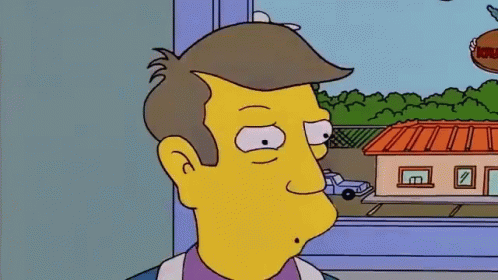
Bikes are the sole determiner of stats, as characters are solely cosmetic beyond possible hitbox variation (I say possible because I’d be lying if I said I noticed a difference). Speaking of characters, there are 5 main characters and 5 generic characters (2 girls, 2 boys, and a biker I’m going to assume is a robot). Our main events include the two obvious mascots (The King and Whopper Jr.), Subservient Chicken (Remember when restaurants had professional furries advertise their food? I wonder why that stopped.), a drive-thru clerk, and Playboy Model Brooklyn Bruke (I’m not making that up, she’s literally on the cover). Also, you can make custom characters by recoloring any of the 5 generic characters if you want.
In terms of the bikes themselves, there’s the Zipper. There’s actually 6 bikes in total, but the zipper is one of the two you start out with, and it has the highest top speed of any bike in the game. And given that you can boost for almost nothing, that renders it’s low acceleration irrelevant. Plus, you have to re-unlock the 4 bikes with each of the engine classes anyway.
The game features a total of 5 gameplay modes:
- Standard Racing: What I’ve been describing the entire time. It’s only a 4th of the game, but is the baseline for the other 3.
- Battle Royale: So it turns out Mario Kart 8’s battle mode wasn’t lazy, it just had the weirdest inspiration. First player to land 6 hits wins; getting hit doesn’t lower your score. Unlike the normal races, the cones deactivate for a bit when a driver runs through them so it’s often better to do a 180 and drive backwards to build up your meter. Then use your shields and use the shield to juggle a single driver for 20 seconds since there’s no i-frames in this game.
- Cone Trial: The first driver to get through 20 gates is the winner. Same rules with the cone gates as Battle Royale.
- Ultimate Time Trial: No items, boost only, no enemies, just time. There’s no tourney option for this nor any unlockables so you’ll probably never touch this one.
- Hardcore Race: No cones of any kind, so no boosting nor power ups. This mode is only as interesting as your opponents are skilled, honestly.
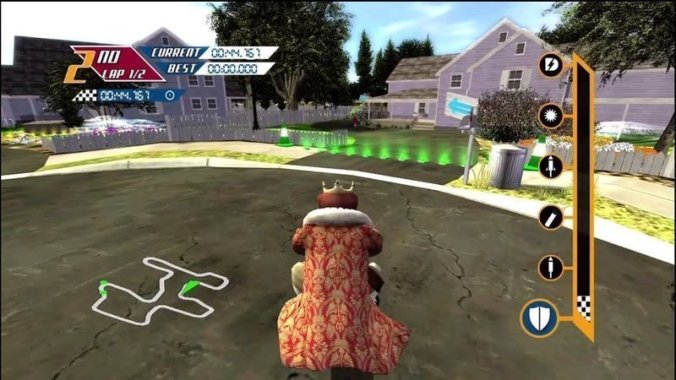
I actually didn’t have any footage of the time trial mode. Completely forgot about it when playing, actually.
While that sounds like a lot, there’s only five tracks in the game. A Burger King parking lot, a neighborhood, “The King’s Castle Gardens,” a construction site, and a fast food farm. The last one is actually kinda interesting, starting on a golden-brick road that leads to a mining operation before going back to the bricked road. But the variety of gameplay modes feels like a means to get around the server lack of tracks. Plus, 100cc and 150cc must be unlocked for each tournament by beating the mode before it. So if you’re good at racing, you’ll be playing the same tracks 12 times each just to unlock everything (which really just amounts to 4 bikes).
And that’s the real shame. The tracks have bits or strategy to them, like driving around ramps at the cost of bypassing cones, but with only 5 tracks across 4 actual game modes, the game is really repetitive. It’s surprisingly competent, but completely unimpressive. But it’s also a “kart” racer you got for $3 alongside a royalty-free Big Mac and a pitiful side of fries, so what do you expect?
I expected less, but wanted more. If they ditched the other two games and focused on this one first, there could have been a nice $10 mascot racer for the Xbox Classic and 360, a set of consoles that can struggle with party games if I’m honest. But alas, this is but the first in the grease stain trilogy.
Sneak King
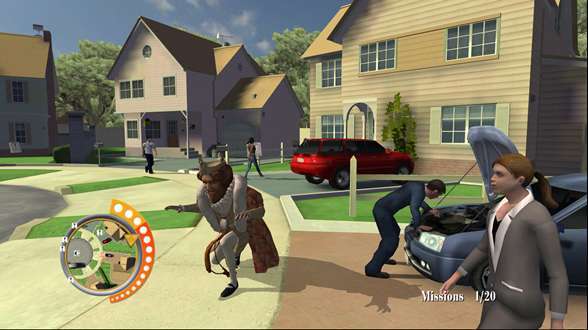
In Sneak King, you sneak up on people to give them food. That’s really all ya do, honestly.
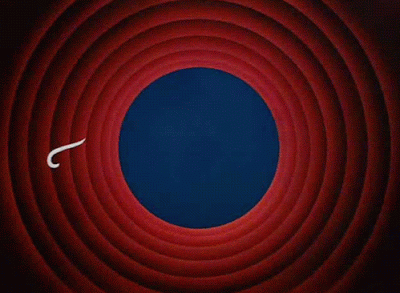
To offer a more detailed answer, The King has decided that the hungry folks of America deserve to be fed, and so sets to use his vast fast food reserves to treat the hungry citizens of his kingdom before they literally pass out from hungry pains. But The King is self aware enough to know how ridiculous he looks, so he’ll need to use his masterful tip-toe skills to negate all sound and limit his visibility to only those who directly see him. But the true judge of character is how one treats their subjects, so The King can wait until they get really hungry, get as close as possible without touching them, and time his summoning jutsu just right to add some flair to his deliveries and maximize his royal score.
How much of that was the game’s description and how much was mine is for you to figure out. But as bizarre as this premise is, it actually fits in line with the advertisements at the time. There was literally an ad of The King being wanted by the police for hugging people and leaving large amounts of money in their pockets, to reveal that Burger King was having deals so massive The King must have gone criminally insane. There’s games out there that are glorified playable ads, Sneak King gets a little respect for actually turning on into a game, and in a genre that’s not quite so played out.
If only the game was good. Or at least okay.
First of all, the positioning to even make the delivery is tight as is, so actually judging how close you must be for a x3 multiplier is pretty difficult. You also have the ability to hide in something to surprise someone. But the animations are so slow that you need to memorize the AI pathfinding and get lucky enough to have said AI’s hunger be low enough for a high score to pull it off. And on that note, the AI can end up walking into the sight of others RIGHT as their hunger gets low enough for higher points. And the flair system is just pressing A at the right time. And to top it all off, which NPCs get hungry is completely RNG, so you can (and will) get missions where an A-Rank is literally impossible.
Speaking of which, the missions. This game did not need 80 of them. Most of them are just delivering food with some added stipulation (don’t let anyone pass out from hunger, get the multiplier high enough, only jump-scare-deliveries count, etc.) with the occasionally more interesting one like having to be spotted by every NPC in the level. But the repetition is even worse here than in Pocket Bike Racer, as the 20 missions per hub is overkill and a half. That said, you only need on average 10 missions per hub to unlock the next, so you can ignore the more annoying ones at least.
I noticed that three of the four sections use similar textures and designs from Pocket Bike Racer. It’s not asset flipping, as the layouts and items are completely different, it’s just weirdly noticeable. Likely a result of all three games being made at the same time.
One of my friends enjoyed the game for the novelty and absurdity of it, and I get that. The gameplay is stupid conceptually, and intentionally stupid at that. But once those factors wear off, you’re left with a hi-score based game where getting a high score means you got lucky. You can unlock a sneaking suit if you complete every mission, complete with a free sense that you wasted your time.
Big Bumpin’
And now the final game, and this one I remember really liking.
Boy, how the times have changed. I’m not going to be coy or clever with this one. Big Bumpin’ is awful. Truly terrible, and one of the few games I’ve played without redeeming traits – a statement not even Ride to Hell Retribution or MindJack earned from me.
Let’s start with the title screen. Each of these games use live action footage of the king doing something related to the game. Pocket Bike Racer has him racing his bike over a greenscreen (you can see the garage that it’s in on the sides). Sneak King has him sneaking around in a surprisingly ominous manner. Big Bumpin’? He stands behind a counter of what looks to be a crummy amusement park. Accurate, but he doesn’t do anything besides stand there.
Characters are the same as in Pocket Bike Racer, as is the character customizer. The bumper cards come in a variety of colors with two unlockable premium carts, but there’s no stat differences.
Visually speaking, this is the ugliest by a mile. On top of the poor model quality, this game is one of those games that use bloom poorly. Bloom is that blur effect strong sources of light give off; games that use it lazily are often games that program in bloom to happen automatically rather than manually light the area, effectively having the engine do the job on its own. Games that do this tend to look really ugly, and this game is no exception, but it’s the combination of this bloom with the Shadow The Hedgehog lack of color saturation that makes this game an exceptional eyesore to look at in motion, let alone play.
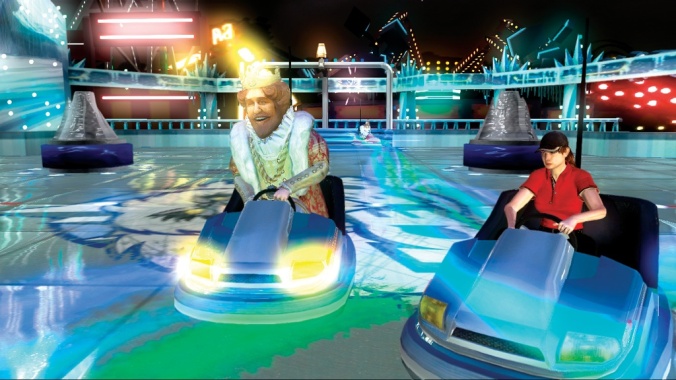
This looks like how a Burger King salad tastes: Nasty.
Sadly, the comparison to Shadow the Hedgehog applies to the controls as well. You are both sluggish and slippery, with most sudden bursts of speed from the boost button resulting in you overshooting your target, or outright dying if the mode allows for it. These things have no sense of weight to them, and moving with any level of accuracy just isn’t possible in the chaotic game modes. Speaking of which:
- Last Man Standing: Drain your opponent’s health and don’t die. Easier said than done since it’s easy to fly into a buzz saw when using your boost, and the death pits being instant kills are just lovely. The cherry on top is the inconsistent damage, resulting in matches that are shorter than the loads times beforehand should the game decide everyone is getting gibbed.
- Bumpin’ Hockey: If playing hockey with bumper cars that control like this is your idea of a good time, please don’t design games.
- Shockball: The best mode in the game. Play hot potato with a bolt of electricity. The charge damages the player holding it (and anyone nearby) after a set time, then a new player is “it” so on and so forth until three players are killed. If the controls were tolerable and the repair item didn’t exist, this one might be fun.
- Power Surge: You know those Mario Party minigames where each player has a goal and has to bring spawning items to that goal to score? Imagine if one of those were designed by a dentist, because this mode is about as enjoyable as a root canal.
The game has 10 stages split across 5 themes, but each stage is meant for one gameplay mode, and so each gameplay mode only has 2 or 3 stages. So this is honestly the lightest game in terms of content, and has the worst content on top of that. The only fact noteworthy about this game is that it’s the only thing from Burger King less appealing than Mac and Cheetos.
What have we learned?
Well, when THQNordic decides to try and profit from meme games by buying the rights to these games and remaking them, at least you know what you’re in for.
I don’t really do recommendations in this series, I prefer to let my words speak for themselves. But I think it’s worth asking: were these games worth the $3 with a meal? I’m still not sure.
I was pleasantly surprised with Pocket Bike Racer for sure, but I’m never going back to it unless it gets added to the Xbox Game Pass so I can force my friends to play it with me. Sneak King is amusing for 20 minutes then becomes an outright chore to play. And Big Bumpin’ is dead to me. But if I’m being honest, I’ve wasted more money on things I’ve put less thought into; I only care about getting my money’s worth (be it from quantity or quality) because I’ve been trained to do that with how expensive video games are. And being completely honest, I’d say that if I’m willing to go to Burger King then I’m clearly not looking for something that delivers on either to begin with.